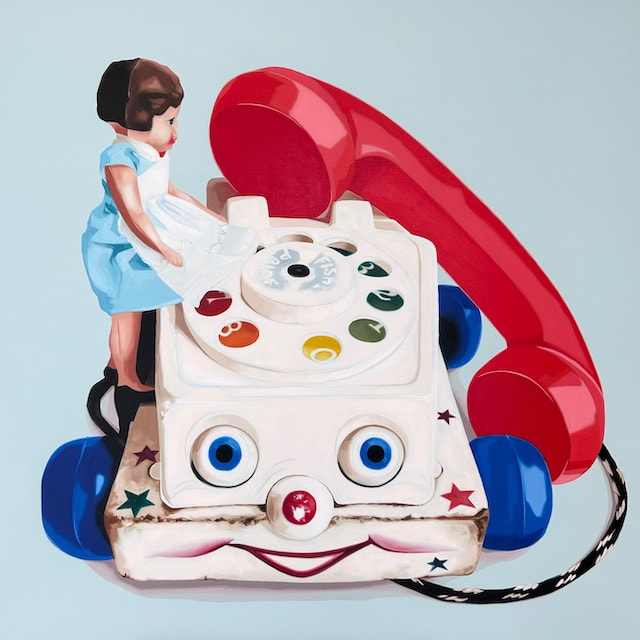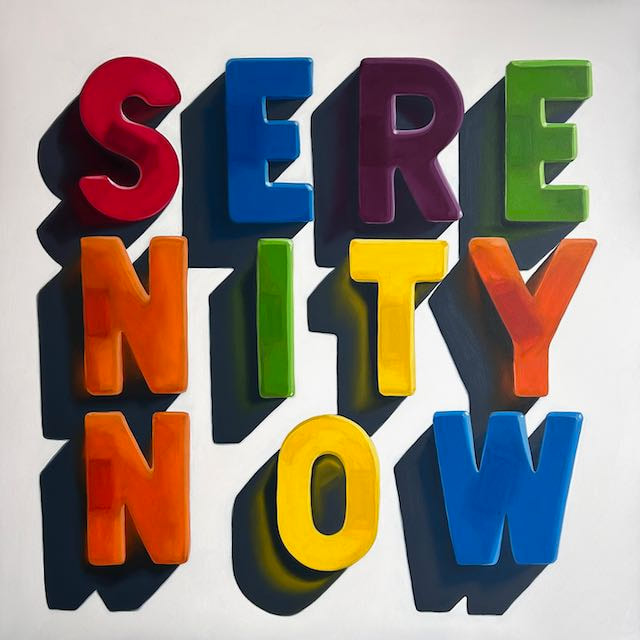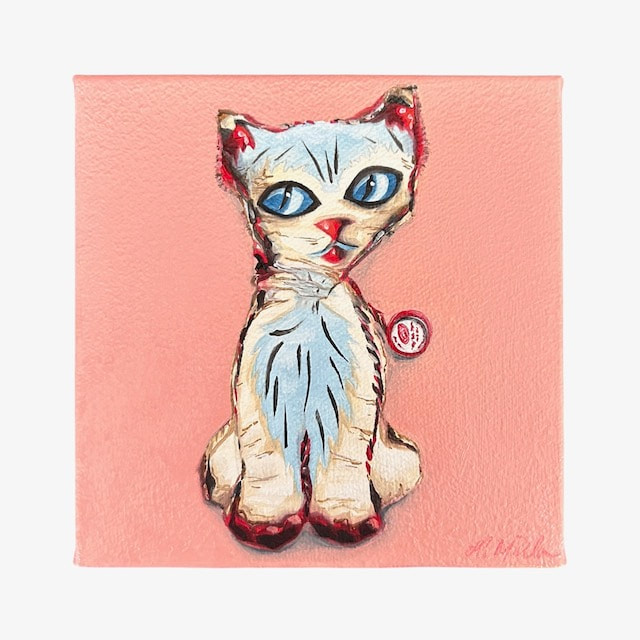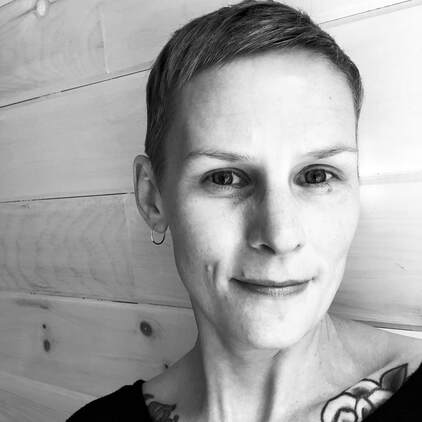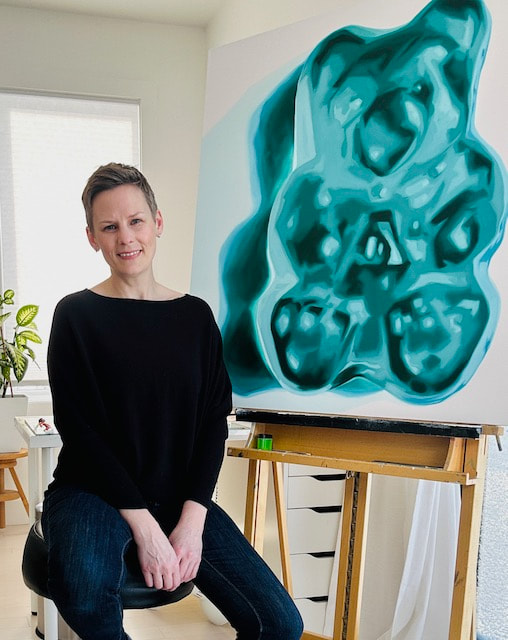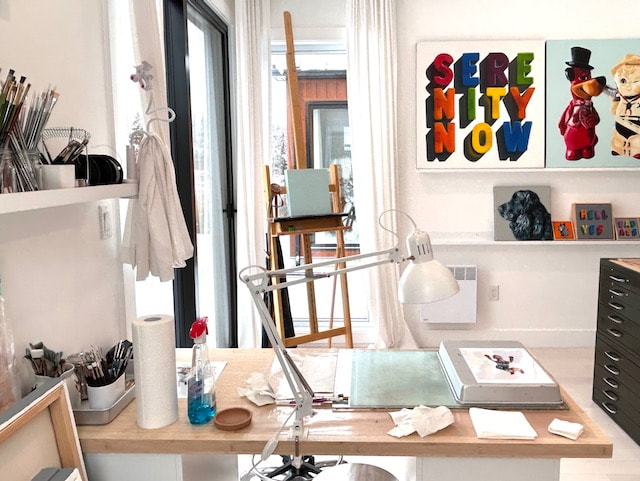Gravitating to the idea of capturing a moment in time, Heather Millar's work is reflective of vintage ambiance steeped in nostalgia, ranging from childhood toys, vintage family snapshots and portraiture, landscape and wildlife caught in a still moment. "I love the idea of having something tangible to represent that moment caught in time" So often our memories obscure what was our reality at the time, so bringing back those images in the form of a painting on canvas lets the viewer treasure what was possibly once lost. Heather is a professional painter living and working in Prince Edward Island since 2008. Formerly from Edmonton, Alberta, she completed her BFA at Alberta College of Art and Design in Calgary in 1998. A painter since childhood, Heather discovered the seductive elements of glass blowing while at ACAD and embraced that as her major for her years there. Upon graduation, the reality of renting or building her own glass studio was out of reach, so she once again picked up her brushes and discovered an entire, untapped world of inspiration within her surroundings. Almost entirely self-taught in painting, Heather’s work has evolved into her own unique blend of impressionist melded with realism with the overall impression of contemporary pop-art whereupon the image depicted is the sole focus of the painting. Heather is currently represented at Canvas Gallery in Toronto, Adele Campbell Fine Art Gallery in Whistler, Details Fine Art Gallery in Charlottetown and Jones Gallery in Saint John. Her work can be found in private collections worldwide, in public collections nationwide and on the set of "Suits" and HGTV.
Published on March 23rd 2021. Artist responses collected in months previous.
What hurdles have you overcome this year and how have they affected your art practice?
After many years of owning a small retail store with my husband, we were fortunate to have sold it before the pandemic hit, not having any idea the kind of impact the world would see. I was thrilled to be able to have the opportunity to finally work as a full-time professional artist, a dream of many that often never gets fulfilled, and to finally be able to work at my own pace. I had two solo shows on my agenda, one in June, the other in September, both totally different bodies of work. Normally, up until this point I've always had to work my "real job" during the day and do my artwork in the evenings, weekends and days off, so I was accustomed to working at a breakneck speed to meet deadlines and keep a momentum. Now I have the time to just slow down, contemplate new work, create pieces at a pace that works for me and focus on just experimenting without feeling like I'm wasting time.
How has your art practice been affected by the pandemic?
I was fully expecting my sales to totally dry up. When everything really went into shut-down in April here in Prince Edward Island, I saw an artist (Matthew Burrows) on Instagram doing something called the Artist Support Pledge, where you post and sell any of your work online for $400 or less. When you reach $2000 worth of sales, you pledge to purchase another participating artist's work. I thought it was such a wonderful idea, and jumped on board. I had an immediate influx of small sales and with that came unexpected local purchases and commissions, something I don't do much of normally. It really gave me a chance to hone my commission negotiation skills and just interact with other fellow artists sharing inspiration and mutual accomplishments. Over the summer covid prevention and life in general has become a new normal, my commercial galleries have all coped wonderfully with making more of a switch to virtual openings and more interactive online purchases and for the most part, it's business as usual, of which I am relieved and so grateful for.
What support systems have you put in place to help keep your practice thriving amidst these unforeseeable circumstances?
This pandemic has really galvanized the reality of isolation and having to shop online, something I don't normally do, myself. Fortunately, several years ago I began offering a giclee print version of my original painting "Listen Closely" that is on the set of Suits and has come into play during various parts of the show, so more than ever I rely on the income from those print sales. When the pandemic struck and everything was so uncertain, I was going to temporarily stop print sales as I was uncertain how reliable the postal system would be. After a couple days it dawned on me that not only would everyone be stuck at home, but everyone would be watching Netflix and I was right. Print sales boomed and are still going strong even now, so I took the opportunity to create new print images and strike while the iron is hot.
What methods do you employ to stay resilient in your art practice? What tips would you recommend to other artists who find staying resilient difficult?
I think my achilles heel is wanting to try and keep pace with some of my contemporaries whom I follow online. I realize all artists work at different paces and it's hard not to get caught up in the comparisons of who is producing work fastest. On top of that, if you are in a commercial gallery there is also an expectation of consistent new work and if you are in multiple galleries, the pressure to produce and keep pace can sometimes be mentally crippling. It's a very fine line to straddle, constantly asking yourself if an idea is worth putting onto canvas, will I be wasting time, will it sell, is it commercially viable, etc. I find when I get to that fever pitch it's best to just reel it all back, remind myself why I'm painting in the first place, stop comparing myself to others and create work first and foremost for myself.
What have you learned about yourself as an artist this year?
I think I've learned that it's okay to slow down, it's okay to do work that intrigues me and potentially nobody else, and it's okay to just go for it. I want to get back to those moments of "happy accidents" to quote Bob Ross, where you're not really sure what your finished piece will look like and to let your painting create itself. I look at old work of mine sometimes and I'm so surprised at how loose it looks. I know at the time my skill went only as far as my ignorance of the medium, but still there was something so thrilling about seeing bold brushstrokes and energy, or strong, deliberate lines. I'm realizing I want to capture that energy again, stop overthinking or overworking a piece and really just relax about it all. I guess I've learned that I'm hard on myself but it's also what motivates me to make each painting better than the last.
What hurdles have you overcome this year and how have they affected your art practice?
After many years of owning a small retail store with my husband, we were fortunate to have sold it before the pandemic hit, not having any idea the kind of impact the world would see. I was thrilled to be able to have the opportunity to finally work as a full-time professional artist, a dream of many that often never gets fulfilled, and to finally be able to work at my own pace. I had two solo shows on my agenda, one in June, the other in September, both totally different bodies of work. Normally, up until this point I've always had to work my "real job" during the day and do my artwork in the evenings, weekends and days off, so I was accustomed to working at a breakneck speed to meet deadlines and keep a momentum. Now I have the time to just slow down, contemplate new work, create pieces at a pace that works for me and focus on just experimenting without feeling like I'm wasting time.
How has your art practice been affected by the pandemic?
I was fully expecting my sales to totally dry up. When everything really went into shut-down in April here in Prince Edward Island, I saw an artist (Matthew Burrows) on Instagram doing something called the Artist Support Pledge, where you post and sell any of your work online for $400 or less. When you reach $2000 worth of sales, you pledge to purchase another participating artist's work. I thought it was such a wonderful idea, and jumped on board. I had an immediate influx of small sales and with that came unexpected local purchases and commissions, something I don't do much of normally. It really gave me a chance to hone my commission negotiation skills and just interact with other fellow artists sharing inspiration and mutual accomplishments. Over the summer covid prevention and life in general has become a new normal, my commercial galleries have all coped wonderfully with making more of a switch to virtual openings and more interactive online purchases and for the most part, it's business as usual, of which I am relieved and so grateful for.
What support systems have you put in place to help keep your practice thriving amidst these unforeseeable circumstances?
This pandemic has really galvanized the reality of isolation and having to shop online, something I don't normally do, myself. Fortunately, several years ago I began offering a giclee print version of my original painting "Listen Closely" that is on the set of Suits and has come into play during various parts of the show, so more than ever I rely on the income from those print sales. When the pandemic struck and everything was so uncertain, I was going to temporarily stop print sales as I was uncertain how reliable the postal system would be. After a couple days it dawned on me that not only would everyone be stuck at home, but everyone would be watching Netflix and I was right. Print sales boomed and are still going strong even now, so I took the opportunity to create new print images and strike while the iron is hot.
What methods do you employ to stay resilient in your art practice? What tips would you recommend to other artists who find staying resilient difficult?
I think my achilles heel is wanting to try and keep pace with some of my contemporaries whom I follow online. I realize all artists work at different paces and it's hard not to get caught up in the comparisons of who is producing work fastest. On top of that, if you are in a commercial gallery there is also an expectation of consistent new work and if you are in multiple galleries, the pressure to produce and keep pace can sometimes be mentally crippling. It's a very fine line to straddle, constantly asking yourself if an idea is worth putting onto canvas, will I be wasting time, will it sell, is it commercially viable, etc. I find when I get to that fever pitch it's best to just reel it all back, remind myself why I'm painting in the first place, stop comparing myself to others and create work first and foremost for myself.
What have you learned about yourself as an artist this year?
I think I've learned that it's okay to slow down, it's okay to do work that intrigues me and potentially nobody else, and it's okay to just go for it. I want to get back to those moments of "happy accidents" to quote Bob Ross, where you're not really sure what your finished piece will look like and to let your painting create itself. I look at old work of mine sometimes and I'm so surprised at how loose it looks. I know at the time my skill went only as far as my ignorance of the medium, but still there was something so thrilling about seeing bold brushstrokes and energy, or strong, deliberate lines. I'm realizing I want to capture that energy again, stop overthinking or overworking a piece and really just relax about it all. I guess I've learned that I'm hard on myself but it's also what motivates me to make each painting better than the last.
Find Heather Millar on Instagram
